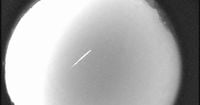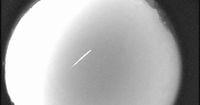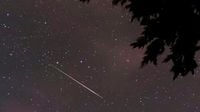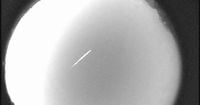The Eta Aquariid Meteor Shower is set to dazzle stargazers as it peaks in the early hours of May 8, 2025, with up to 50 "shooting stars" streaking through the night sky every hour. This spectacular event occurs when Earth passes through debris left behind by Halley's Comet, which has been orbiting the sun for centuries.
According to Professor Anna Moore, director of the ANU Institute for Space, the best time to observe this celestial display is during the "pre-dawn" hours, specifically between 3 AM and 5 AM on May 8. "What makes this meteor unique is that most other meteor showers just pass through the Earth, so you have a night to see it," she explained. "This one is different; it has been happening for centuries, so the debris is quite large. You can see it over a month." The Eta Aquariids are known for their speed, leaving impressive glowing trails in their wake, rather than the bright flashes often associated with fireballs.
Australia is particularly well-positioned to view the Eta Aquariids, as its night sky faces the center of the Milky Way, offering a prime vantage point for this astronomical event. While the peak is expected to occur on May 8, the meteor shower first became active on April 19 and will continue to be visible until about May 28. Stargazers will still have opportunities to catch glimpses of these meteors even after the peak, although they will not be as numerous or bright.
The Eta Aquariids are part of a broader phenomenon of meteor showers that occur annually as Earth orbits the sun. Most meteor showers are named after the constellation from which they appear to radiate. In the case of the Eta Aquariids, the meteors seem to emerge from the constellation Aquarius, which is higher in the sky in the Southern Hemisphere than in the Northern Hemisphere.
Nasa scientists explain that meteor showers occur when Earth passes through a trail of debris left behind by comets. As these meteoritic materials enter the atmosphere, they burn up, creating the visual spectacle known as "shooting stars." While daily, an estimated 48.5 tons of meteoritic material falls to Earth, meteor showers represent a significant increase in visibility, with many more meteors entering the atmosphere at once.
While the Eta Aquariids are notable for their speed and the glowing trails they leave, they are not as bright as some other meteor showers. This year’s event follows the Lyrid meteor shower and precedes several other meteor showers set to peak in the coming months. The Southern Delta Aquarids and the Alpha Capricornids are both expected to peak around July 29 and 30, while the highly anticipated Perseid meteor shower will reach its peak on August 12 and 13.
As stargazers prepare for the Eta Aquariids, they are reminded that the best views will be achieved by escaping the light pollution of urban areas. Finding a dark location away from city lights will enhance the experience, allowing observers to fully appreciate the beauty of the night sky.
In conclusion, the Eta Aquariid Meteor Shower offers a unique opportunity for skywatchers to witness a historic celestial event. With its roots in the debris of Halley's Comet, this meteor shower not only captivates audiences with its visual splendor but also connects us to the cosmos in a profound way. As the peak approaches, enthusiasts are encouraged to prepare for a night of wonder beneath the stars.




